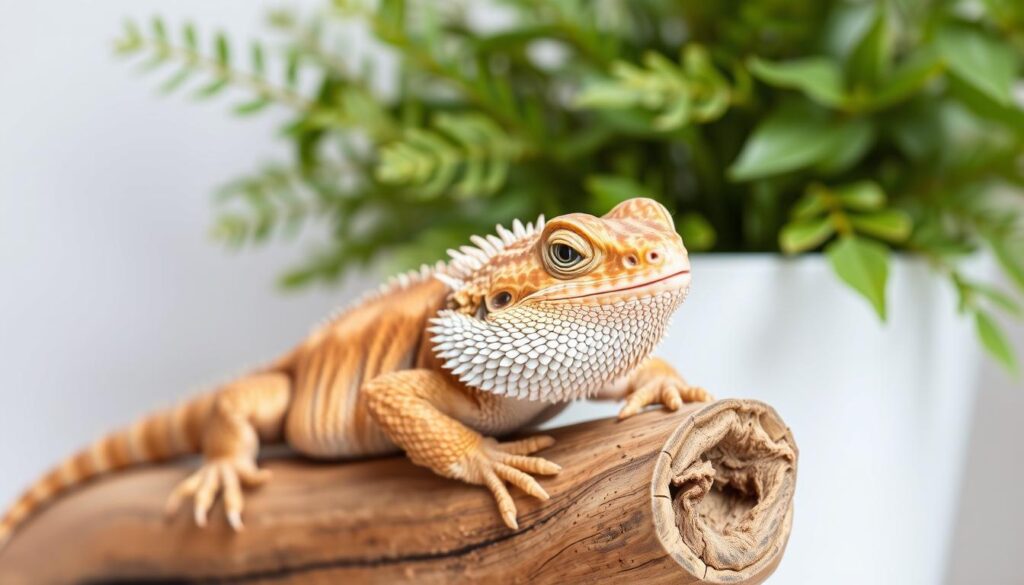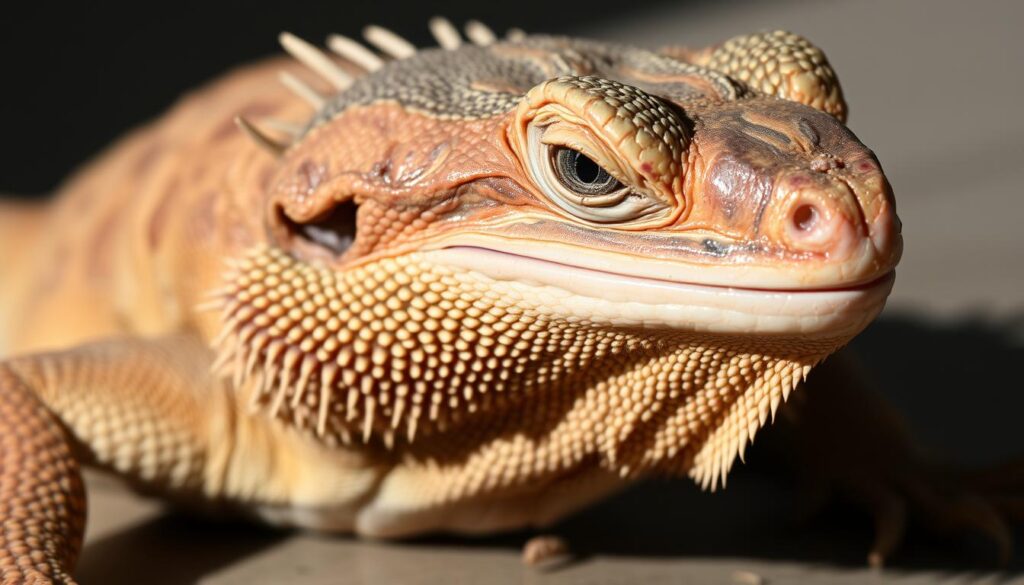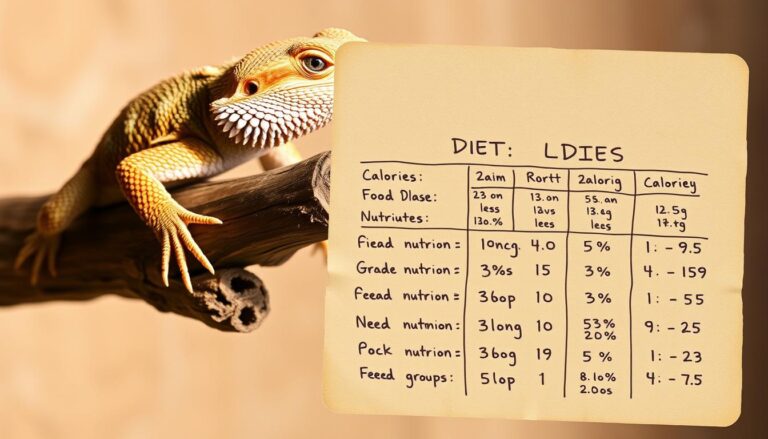Common Bearded Dragon Illnesses: A Helpful Guide
Learn about common bearded dragon illnesses and how to identify them in this helpful guide. Get the facts you need to keep your pet healthy.
Reptiles like bearded dragons are known for their hardy nature, but even these resilient pets can face health challenges. Captive environments often contribute to diseases that can go unnoticed without proper care. Early detection is crucial, as behavioral changes and physical signs often indicate underlying issues.
In 2024, the CDC issued an advisory linking 15 Salmonella cases to contact with these reptiles. This highlights the importance of maintaining hygiene and monitoring your pet’s health. For US pet owners, understanding these risks and implementing preventive measures is essential.
This guide covers five key illness categories and actionable strategies to keep your pet thriving. Whether you’re a new owner or an experienced enthusiast, this resource provides practical insights to ensure your reptile stays healthy and happy.
Key Takeaways
- Early detection of health issues is vital for captive reptiles.
- Behavioral changes often signal underlying problems.
- The CDC’s 2024 advisory links Salmonella cases to bearded dragon contact.
- Proper hygiene and care can prevent many diseases.
- This guide covers five key illness categories and prevention methods.
Introduction to Bearded Dragon Health
Understanding the basics of reptile health can prevent many potential issues. For these animals, regular eating, drinking, and active basking are key indicators of well-being. Normal bowel movements also signal a healthy digestive system.
Creating the right environment is crucial. Proper UVB lighting gradients, temperature zones, and humidity control mimic their natural habitat. These conditions help them thrive and stay active.

Zoologist Nigel recommends semi-annual fecal exams and annual bloodwork for early detection of health problems. These routine checks can identify issues before they become serious.
Reptiles from pet stores often face higher disease risks compared to those from reputable breeders. This highlights the importance of sourcing your pet from trusted sources.
Species-specific care is essential. Tailoring their diet and habitat to their needs can prevent up to 80% of health issues. By focusing on these basics, you can ensure your pet remains healthy and happy.
Signs Your Bearded Dragon May Be Sick
Spotting symptoms of illness in your pet reptile is crucial for timely care. Early detection can prevent complications and ensure your pet remains healthy. Watch for subtle changes in behavior, appearance, and activity levels.

Lethargy and Loss of Appetite
Persistent sleepiness and reduced basking are key signs of lethargy. While brumation (a natural hibernation-like state) occurs seasonally, pathological lethargy lasts longer and isn’t tied to the time of year.
Loss of appetite is another red flag. Adults refusing food for over three days or juveniles for more than 24 hours may indicate an underlying condition. Monitor their eating habits closely.
Changes in Behavior and Color
Behavioral shifts, such as increased aggression or hiding, often signal discomfort. Color changes can also reveal health issues. A black beard may indicate stress, while darkening could point to thermal dysregulation.
Respiratory Issues and Discharge
Abnormal breathing patterns, like open-mouth gasping or wheezing, are concerning. Mucus discharge, bubble production, or audible clicking sounds from the nose may indicate a respiratory infection.
Unusual postures, such as an arched back or favoring a limb, often suggest pain. If you notice these signs, consult a veterinarian promptly.
Common Bearded Dragon Illnesses
Reptiles face unique health challenges that require attentive care. Captive environments can lead to specific diseases if not managed properly. Early detection and proper treatment are essential to ensure your pet remains healthy.
Respiratory Infections
Respiratory infections are often caused by bacterial or viral agents. Symptoms include wheezing, mucus discharge, and open-mouth breathing. Bacterial infections typically respond well to antibiotics, while viral cases may require supportive care.
Metabolic Bone Disease (MBD)
MBD is a serious disease caused by calcium deficiency. Early signs include tremors and weakness, progressing to limb paralysis and skeletal deformities. Proper UVB lighting and a calcium-rich diet can prevent this condition.
Impaction
Impaction occurs when the digestive tract is blocked, often due to ingesting substrate or chitin-heavy foods. Symptoms include lethargy and lack of bowel movements. Immediate veterinary intervention is crucial to avoid severe complications.
Prolapse
Prolapse can affect the cloaca or intestines, often due to straining or improper diet. This is a medical emergency requiring immediate attention. Differentiating between cloacal and intestinal prolapse is vital for effective treatment.
Adenovirus (ADV)
ADV is a viral infection that can cause stargazing posture and lethargy. It spreads through direct contact, making quarantine essential for infected reptiles. Supportive care is the primary treatment for ADV cases.
Preventing Illness in Bearded Dragons
Maintaining the health of your pet reptile requires proactive measures and attention to detail. By focusing on key factors like diet, environment, and regular checkups, you can significantly reduce the risk of health issues. Here’s how to create a thriving enclosure and ensure your pet stays healthy.
Proper Diet and Nutrition
A balanced diet is essential for your pet’s well-being. Juveniles require more protein, while adults benefit from a higher vegetable intake. Calcium supplementation is crucial at all life stages. Use the following ratios for optimal health:
- Juveniles: Calcium powder daily, mixed with food.
- Adults: Calcium powder 3-4 times weekly.
Ensure their food is rich in vitamins and minerals to support overall health.
Optimal Enclosure Conditions
Creating the right environment is key to preventing illness. Use slate tile substrates for easy cleaning and to reduce ingestion risk. Maintain proper temperature zones:
| Zone | Temperature Range |
|---|---|
| Basking | 95-110°F |
| Cool | 75-85°F |
Replace UVB bulbs every 6-12 months to ensure adequate lighting. Proper humidity levels and clean water sources are also vital.
Regular Veterinary Checkups
Routine veterinary visits are essential for early detection of health issues. Recommended screenings include:
- Fecal parasitology tests.
- ADV blood PCR for viral infections.
Sanitize the enclosure regularly using chlorhexidine solutions to prevent bacterial growth. Practice safe handling to minimize Salmonella transmission risk.
By following these guidelines, you can provide the best care for your pet and ensure a healthy, happy life.
How to Handle Respiratory Infections
Respiratory infections in reptiles can escalate quickly if not addressed promptly. Early detection and proper treatment are crucial to prevent complications. Here’s a step-by-step guide to managing these issues effectively.
First, isolate the affected reptile to prevent the spread of infection. Increase the enclosure temperature to 100°F and reduce humidity levels. These adjustments help alleviate respiratory distress and create a more comfortable environment.
Oral antibiotics are often required for bacterial infections. Enrofloxacin is a common choice, with dosage protocols based on weight. Below is a detailed table for accurate administration:
| Weight (grams) | Dosage (mg/kg) |
|---|---|
| 50-100 | 5-10 |
| 101-200 | 10-15 |
| 201+ | 15-20 |
Clean oral discharge using saline-soaked gauze. Gently wipe the mouth area to remove mucus and prevent further irritation. This step is essential for maintaining hygiene and comfort.
After antibiotic therapy, introduce probiotic supplements to restore gut health. This follow-up care ensures a balanced digestive system and supports overall recovery.
Timely veterinary intervention significantly improves outcomes. Mortality rates are much lower with proper treatment, emphasizing the importance of acting quickly at the first signs of respiratory issues.
Understanding Metabolic Bone Disease
Metabolic Bone Disease (MBD) is a serious condition affecting reptiles, often linked to improper care and diet. This disease results from calcium deficiency, improper UVB exposure, or poor nutrition. Early detection and proper treatment are crucial to prevent long-term damage.
UVB lighting is essential for vitamin D3 synthesis, which helps reptiles absorb calcium. The optimal UVB wavelength range is 290-315nm. Without this, calcium absorption is impaired, leading to weakened bones and other complications.
Calcium supplements are vital for preventing MBD. Calcium carbonate is commonly used, but calcium citrate offers better absorption rates. Below is a comparison of the two:
| Calcium Type | Absorption Rate |
|---|---|
| Calcium Carbonate | Moderate |
| Calcium Citrate | High |
Radiographic signs of MBD include reduced bone density and pathological fractures. These symptoms indicate advanced stages of the disease, requiring immediate intervention.
Rehabilitation often involves liquid calcium glubionate. The dosing schedule depends on the severity of the condition. Here’s a recommended protocol:
| Weight (grams) | Dosage (mg/kg) |
|---|---|
| 50-100 | 10-15 |
| 101-200 | 15-20 |
| 201+ | 20-25 |
Preventing MBD is far more cost-effective than long-term treatment. Investing in proper UVB lighting, calcium supplements, and a balanced diet can save both money and your pet’s health. Regular veterinary checkups are also essential for early detection.
By understanding the causes and implementing preventive measures, you can ensure your reptiles remain healthy and free from this debilitating disease.
Dealing with Impaction in Bearded Dragons
Impaction is a serious digestive issue that can affect reptiles if not addressed promptly. It occurs when the digestive tract is blocked, often due to ingesting substrate or food that is difficult to process. Early detection and proper treatment are crucial to prevent severe complications.
Abdominal palpation is a useful technique to locate blockages. Gently feel the abdomen for any hard or swollen areas. If a blockage is suspected, avoid feeding and consult a veterinarian immediately.
When it comes to laxatives, some are safer than others. Mineral oil is often recommended for mild cases, while osmotic agents should be avoided due to potential risks. Here’s a comparison:
| Laxative Type | Safety Level |
|---|---|
| Mineral Oil | Safe |
| Osmotic Agents | Dangerous |
Surgery may be necessary if the obstruction persists for more than 72 hours. Radiographic confirmation is essential before proceeding. This ensures the cause of the blockage is accurately identified.
Substrate safety is another critical factor. Use substrates with appropriate particle sizes for different age groups. Here’s a quick guide:
- Juveniles: Fine particles to reduce ingestion risk.
- Adults: Larger particles for easier cleaning.
Post-recovery feeding protocols are vital for a smooth recovery. Introduce Critical Care formula gradually to ensure proper nutrition. This helps the reptile regain strength and digestive health.
By following these guidelines, you can effectively manage impaction and ensure your pet’s well-being. Proper care and attention to the enclosure and food choices can prevent this issue from recurring.
What to Do in Case of Prolapse
When dealing with prolapse in reptiles, immediate action is critical to prevent further complications. Prolapse occurs when internal tissues protrude through the cloaca, often due to straining or improper diet. Quick and correct treatment can make a significant difference in the outcome.
Start by applying a moist compress to the affected area. This helps reduce swelling and prevents tissue damage. Next, prepare a sugar water bath by dissolving one tablespoon of sugar in a cup of warm water. Soak the prolapsed tissue for 10-15 minutes to reduce inflammation and encourage retraction.
Avoid attempting manual reduction at home. This can cause further injury or worsen the condition. Instead, seek veterinary assistance immediately. Professionals can assess the severity and determine the best course of action.
Veterinary repair options include purse-string suturing or resection, depending on the severity. Purse-string suturing is often used for mild cases, while resection may be necessary for necrotic tissue. Both methods aim to restore normal anatomy and prevent recurrence.
To reduce the risk of future prolapse, optimize your pet’s diet with increased dietary fiber. This promotes healthy bowel movements and reduces straining. Prognosis depends on tissue viability, with early intervention offering the best way to ensure a full recovery.
By following these steps, you can effectively manage prolapse and protect your pet’s health. Proper care and timely treatment are essential for a positive outcome.
Adenovirus in Bearded Dragons: What You Need to Know
Adenovirus is a significant concern for reptile owners, particularly those caring for bearded dragons. This disease can affect both juveniles and adults, with varying degrees of severity. Understanding its transmission, diagnosis, and prevention is essential for maintaining the health of your pet.
The virus spreads through both vertical and horizontal transmission. Vertical transmission occurs from parent to offspring, while horizontal transmission happens through direct contact with infected individuals or contaminated surfaces. This makes quarantine protocols critical for new additions to your collection.
Diagnosing adenovirus involves two primary methods: cloacal swab PCR and post-mortem histopathology. Cloacal swab PCR is a non-invasive option for live reptiles, while histopathology is used post-mortem to confirm the infection. Early detection can help manage the spread and reduce mortality rates.
Quarantine is a vital step in preventing the spread of adenovirus. New dragons should be isolated for at least 90 days before introducing them to an existing group. This period allows for observation and testing to ensure they are free of the virus.
Mortality rates vary significantly by age. Neonates face an 80% mortality rate, while adults have a lower rate of around 20%. This highlights the importance of early intervention and proper care for younger reptiles.
Disinfection is another key aspect of prevention. Use F10 SC veterinary disinfectant to clean enclosures and equipment. This product is effective against adenovirus and other pathogens, ensuring a safe environment for your pets.
| Disinfection Step | Guidelines |
|---|---|
| Surface Cleaning | Apply F10 SC at a 1:500 dilution. |
| Equipment Sanitization | Soak items for 10 minutes in the solution. |
| Frequency | Clean weekly or after handling sick animals. |
By following these guidelines, you can minimize the risk of adenovirus and protect the health of your reptiles. Proper care and attention are essential for preventing this disease and ensuring a thriving environment for your pets.
Conclusion
Ensuring the well-being of your reptile pet involves a combination of proactive measures and informed decisions. By focusing on three key pillars—environment control, proper nutrition, and a strong veterinary partnership—you can significantly reduce the risk of health issues.
Preventive care is not only cost-effective but also ensures a higher quality of life for your pet. Investing in regular checkups and proper habitat setup can save you from costly emergency treatments in the long run.
For additional support, use resources like the ARAV-certified vet locator and UVB meter recommendations. These tools help maintain optimal conditions and provide accurate information for your pet’s needs.
With proper disease management, many reptiles can live up to 10-15 years or more. This highlights the importance of early detection and consistent care.
Empower yourself with knowledge. By staying informed and proactive, you can ensure your reptile thrives for many years to come.






